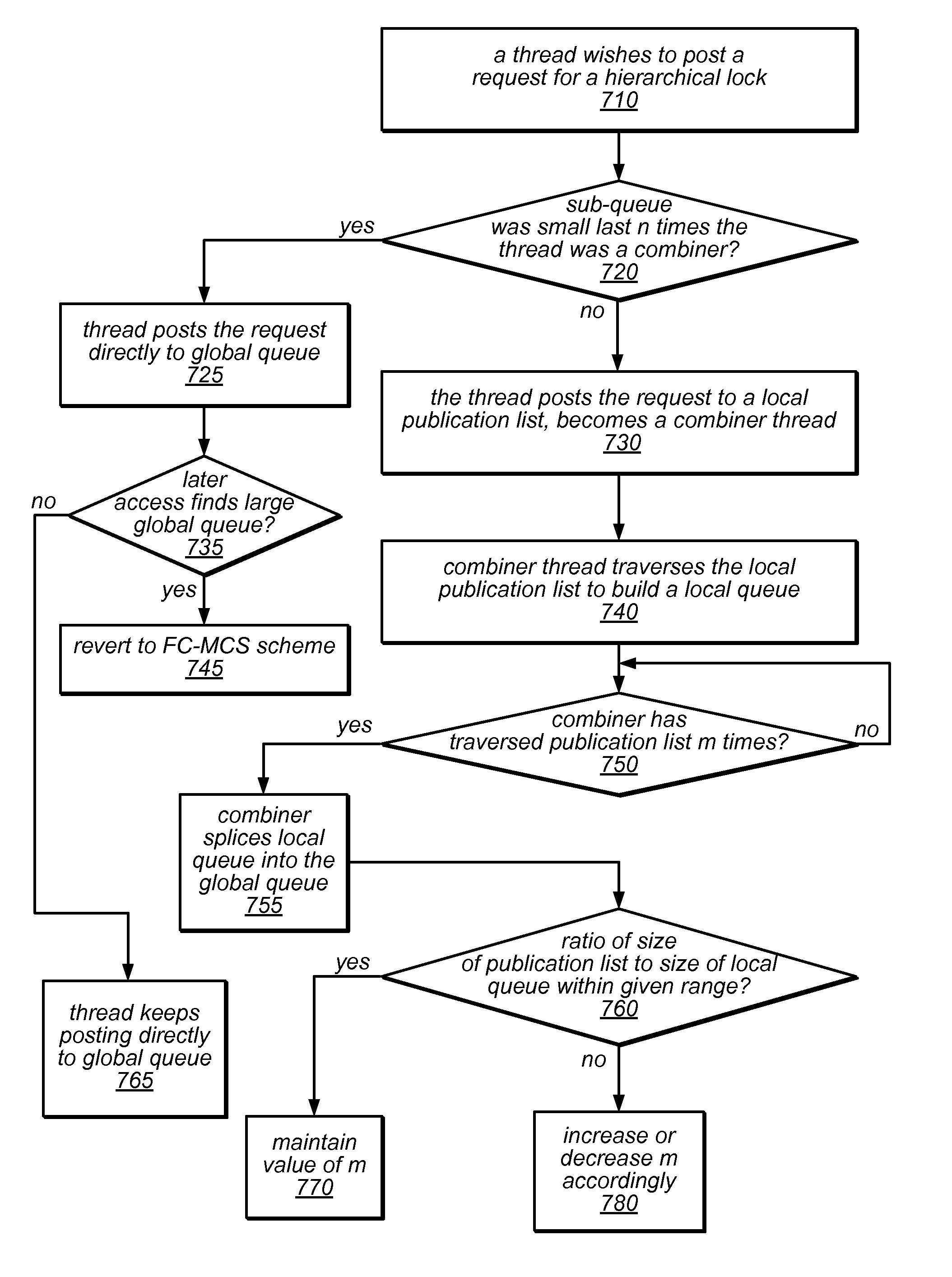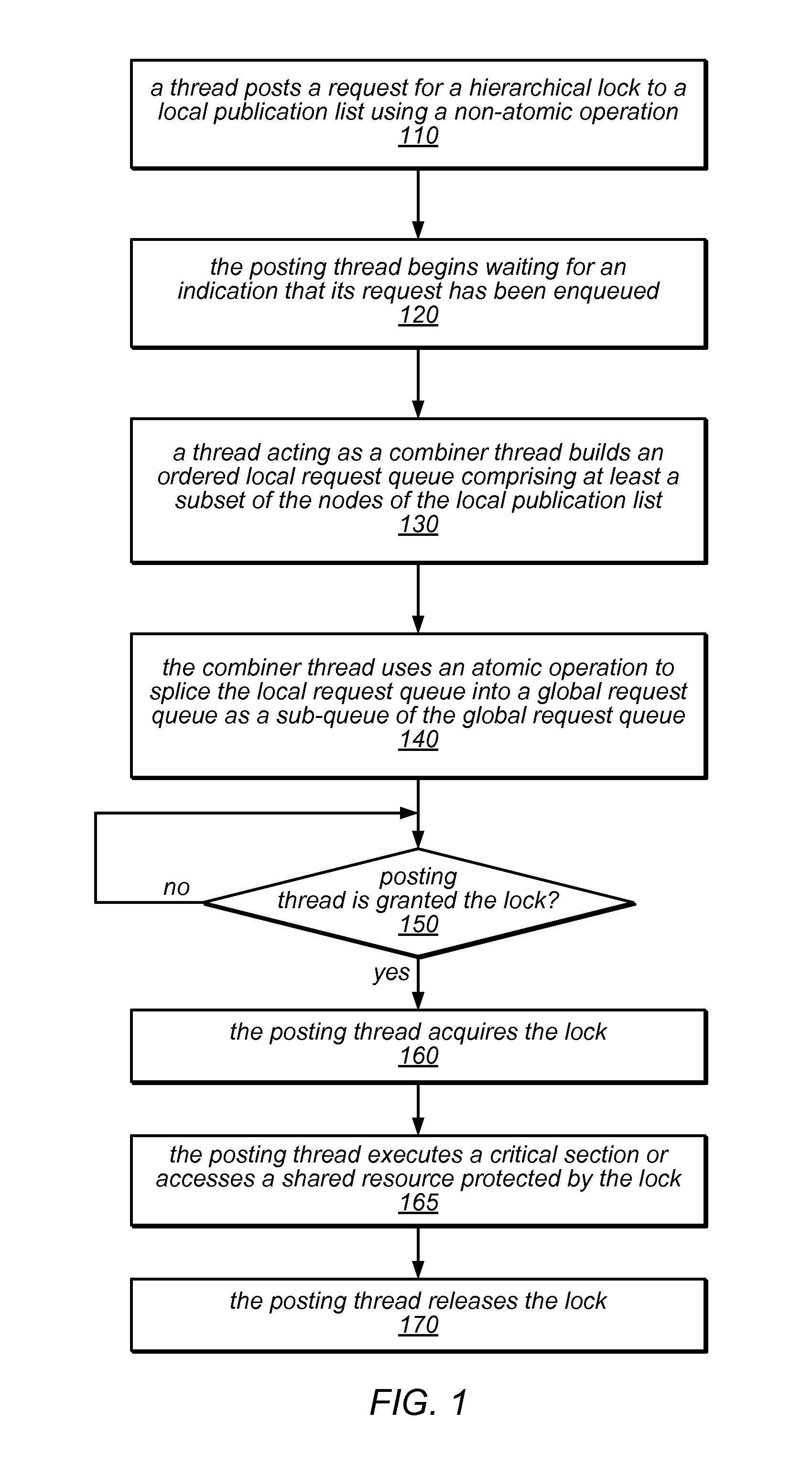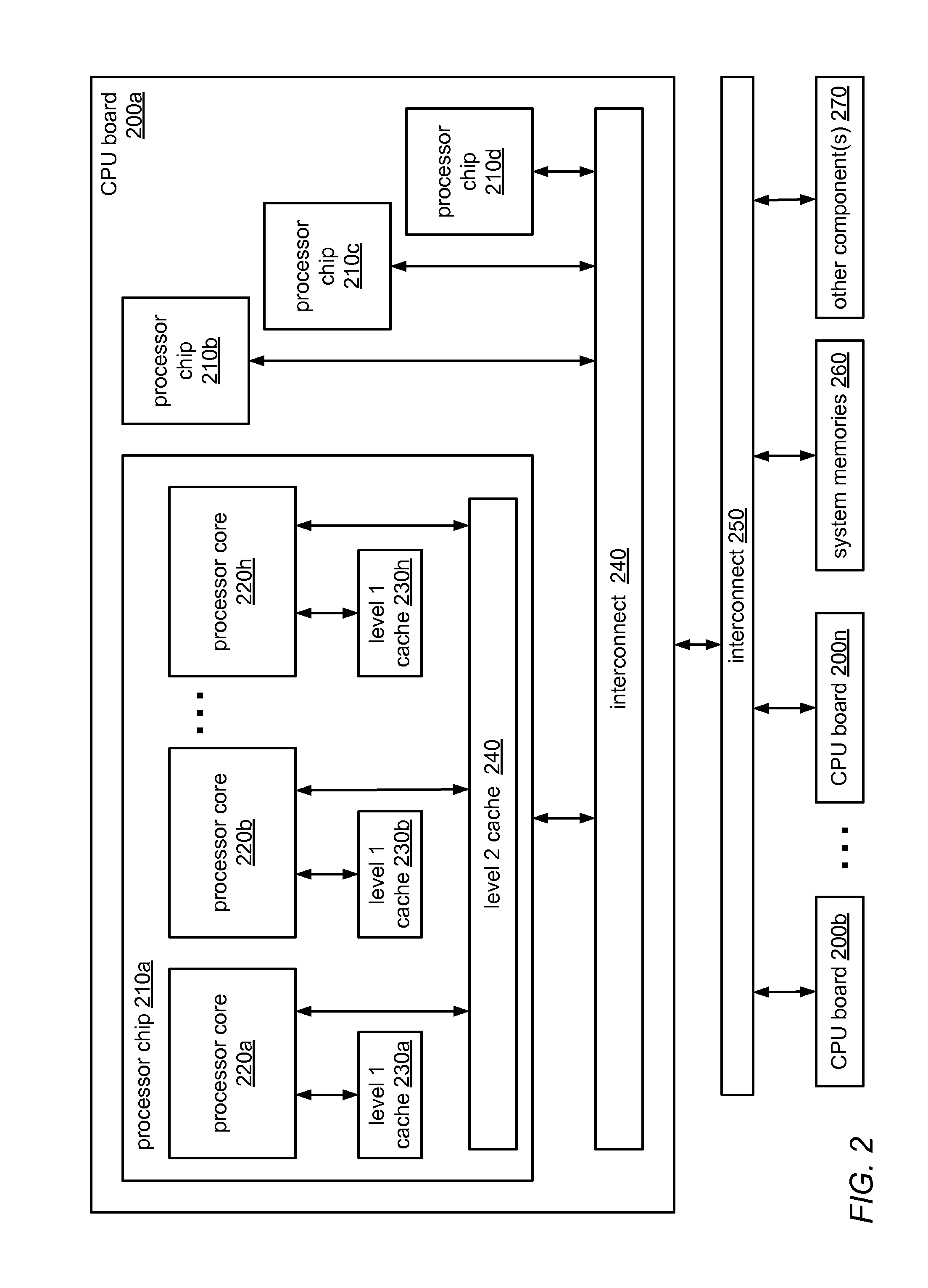System and Method for Implementing Hierarchical Queue-Based Locks Using Flat Combining
a hierarchical and queue-based technology, applied in the field of hierarchical locks, can solve the problems of significant fairness issues, invalidation, and high cost of numa machines, and achieve the effects of low cost of interconnection traffic, and low cost of synchronization operations
- Summary
- Abstract
- Description
- Claims
- Application Information
AI Technical Summary
Benefits of technology
Problems solved by technology
Method used
Image
Examples
Embodiment Construction
[0023]Multicore machines are growing in size, and accordingly shifting from simple bus-based designs to NUMA and CC-NUMA architectures. With this shift, the need for scalable hierarchical locking algorithms is becoming crucial to performance. The system and methods described herein may in some embodiments be used to implement scalable hierarchical queue-based locks based on the flat combining synchronization paradigm. The algorithm for these locks includes a mechanism for building local queues of waiting threads in a highly efficient manner, and then merging them globally, all with little interconnection traffic and virtually no costly synchronization operations in the common case. In empirical testing on a state-of-the-art 256-way CC-NUMA machine, the flat-combining hierarchical lock described herein significantly outperformed all classic locking algorithms, and at high concurrency levels provided a factor of two improvement over HCLH, the most efficient known hierarchical locking ...
PUM
 Login to View More
Login to View More Abstract
Description
Claims
Application Information
 Login to View More
Login to View More - R&D
- Intellectual Property
- Life Sciences
- Materials
- Tech Scout
- Unparalleled Data Quality
- Higher Quality Content
- 60% Fewer Hallucinations
Browse by: Latest US Patents, China's latest patents, Technical Efficacy Thesaurus, Application Domain, Technology Topic, Popular Technical Reports.
© 2025 PatSnap. All rights reserved.Legal|Privacy policy|Modern Slavery Act Transparency Statement|Sitemap|About US| Contact US: help@patsnap.com



